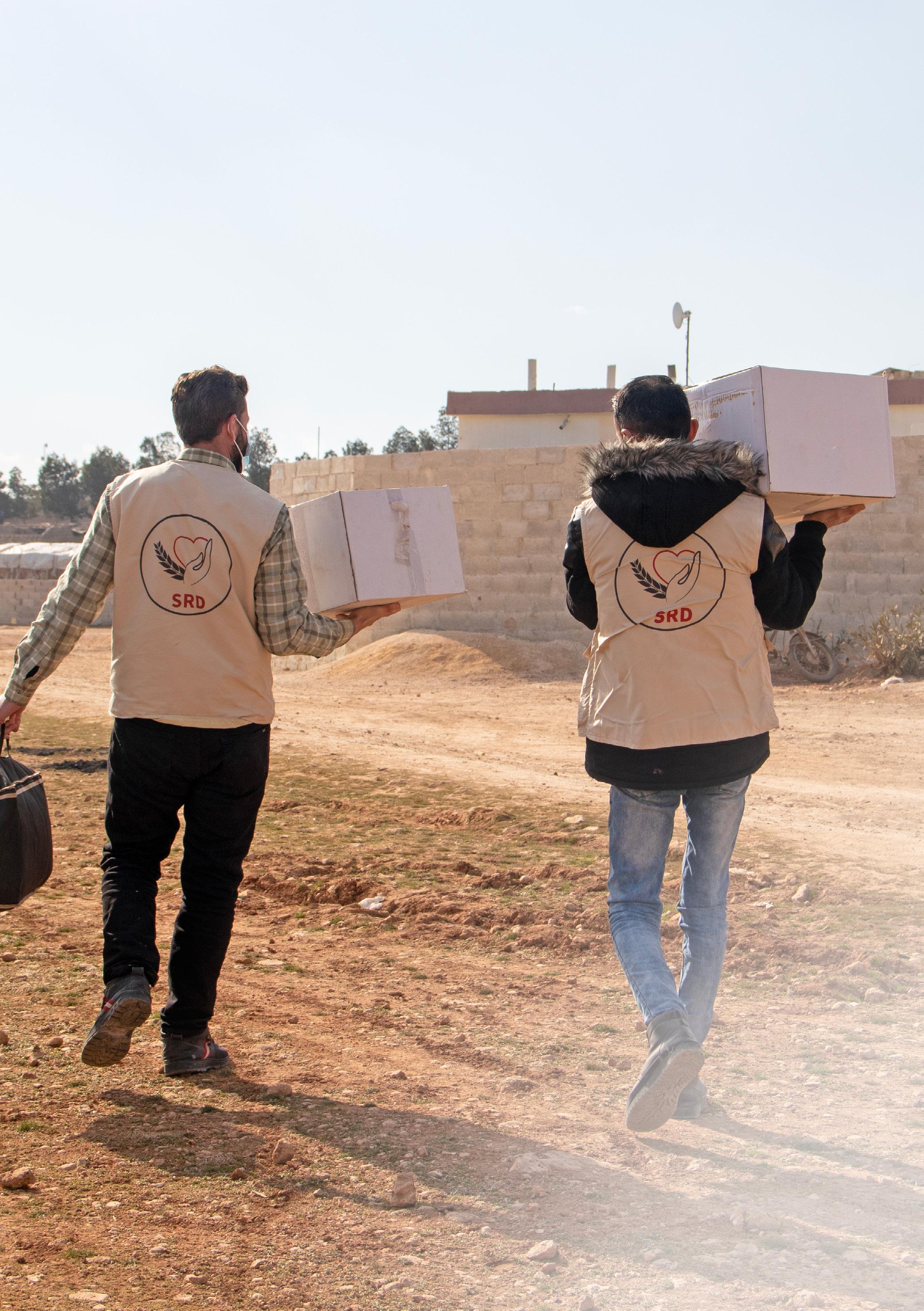

Situation Overview in Northwest Syria
At least 3 million people have been affected by the earthquakes in the Idleb province.
More than 4,500 deaths and more than 8,700 injuries due to the earthquakes have been reported in Northwest Syria as of March 6, according to the Health Cluster.
At least 148 cities and towns in north-west Syria have been affected by the earthquakes. The districts with the highest number of deaths and injuries, as of March 6, are Harim, Afrin and Jebel Saman. Two-thirds of all injuries were reported in Harim.
As of March 6, more than 1,800 buildings have been completely destroyed and more than 8,700 buildings have been partially destroyed. 57% of partial and fully destroyed buildings were reported in Harim and Afrin.


Our Earthquake Response
In coordination with other local responders, the SRD’s team started immediately evacuating the injured from affected areas in Jenderes, Harim, Salqin, Besenia, and Sarmada. The referral teams worked 24/7 in three shifts, and six new mobile clinics were added to the already mobilized six teams put to work to reach the new IDPs in their new locations. Health facilities received more than 525 injured people during the first three days of the disaster. Protection mobile teams committed to 1,433 PSS support sessions, and the rapid response team distributed 322 Kits, and two tents for 80 Beneficiaries.
We had countless meetings with partners, donors, and other stakeholders to build a better response, coordination, rapid needs assessments, and more efficient dissemination of information resulting in better access to a higher number of people in need. The following is a more detailed summery of services per sector.

Health Care Response
29,749
Health Care Services Provided

Ambulance System
Our ambulance teams were immediately mobalized as first responders moments after the first earthquake. They assisted in relieving the injured and transferring cases between hospitals to receive appropriate treatment. This ensured that they were able to relieve pressure off any particular location and distribute it between centers. Their areas of work included (the areas of Euphrates Shield, Olive Branch and Idlib).
21 participating ambulances
1835 referrals or transfers
Mobile Clinics
By February 8th, SRD had formed mobile clinics to respond to the disaster that occurred in the area. Each clinic included a general practitioner, a pediatrician, a midwife or gynecologist, a nursing staff, and community health workers. These clinics were launched with the support, resources (including medication) and guidance of the following medical facilities:
• Karm Al-Zaytoun Center
• Bab Al-Salama Center
• Meles Health Center
• Al-Firdous Women’s Hospital
• Bza’a Health Center
Mobile clinics were established in the following regions:
• Harem
• Jenderes
• Dartaza (2)
• Azaz (3)
Ambulance and dressing services, management of communicable and non-communicable diseases, health consultations, child care, reproductive health services, nutrition, and referrals to specialists were provided by the team.
12 mobile clinics were mobalized following the earthquake
7 mobile clinics are still operational
14,432 medical consultations were provided at the mobile clinics
Hospitals
Al-Rafah Hospital in Jenderes city was partially demolished and the entire hospital was damaged. A field hospital was quickly established in response to the damage and SRD was able to continue providing services to the sick and injured immediately following the earthquake disaster.
Medical services were also provided to the people of the affected areas through Al-Salam Hospital in Harem and Al-Firdous Hospital in Darat Izza.
4 Hospitals provided 13482 services

Mobile Teams
Response teams were formed to provide mental health services for the victims of the earthquake through the resources and networks within our protection sector. These response teams worked in SRD›s facilities and they worked extensively to reach temporary gathering places and shelters. Sometimes they worked along side the mobile medical clinics, other times they deployed separately.
10 mobile teams worked from February 7th – 28th.
Staff participating in the mobile teams:
• Case managers
• Awareness worker
• Psychological support worker
• Case management worker
• Community health worker
• Early childhood development trainers
Services provided through mobile protection teams:
• Psychological First Aid (PFA)
• Psychosocial Support (PSS)
• Information sharing about other services
• Referrals to other basic services (NFIs, food, shelter, etc)
• Dissemination of basic messages on GBV prevention
• Organizing recreational activities

NFI Kits Distribution
322
NFI Kits with Basic Essentials
Distributed
150 Kits to Faith Camp Jandiers
43 Kits in Al-Qirba camp Jenderes
94 Kits in Musaybin camp Qabasin
60 Kits in Bazaa
Other Response Activities
• 2 tents were established on the second day of the earthquake in the city of Azaz, to be used as temporary shelter for the affected families or those who fled in fear of the potential collapse of their homes. The tents were equipped, their floors were insulated, and heating was provided. About 80 beneficiaries were provided care through them.

• Approximately 250 heating blankets were distributed to those affected by earthquakes in the areas of Azaz and Jenderes.
• 250 meals were provided on the second day of the earthquake.
• Medicine and medical consumables were provided and distributed to medical teams and facilities.






